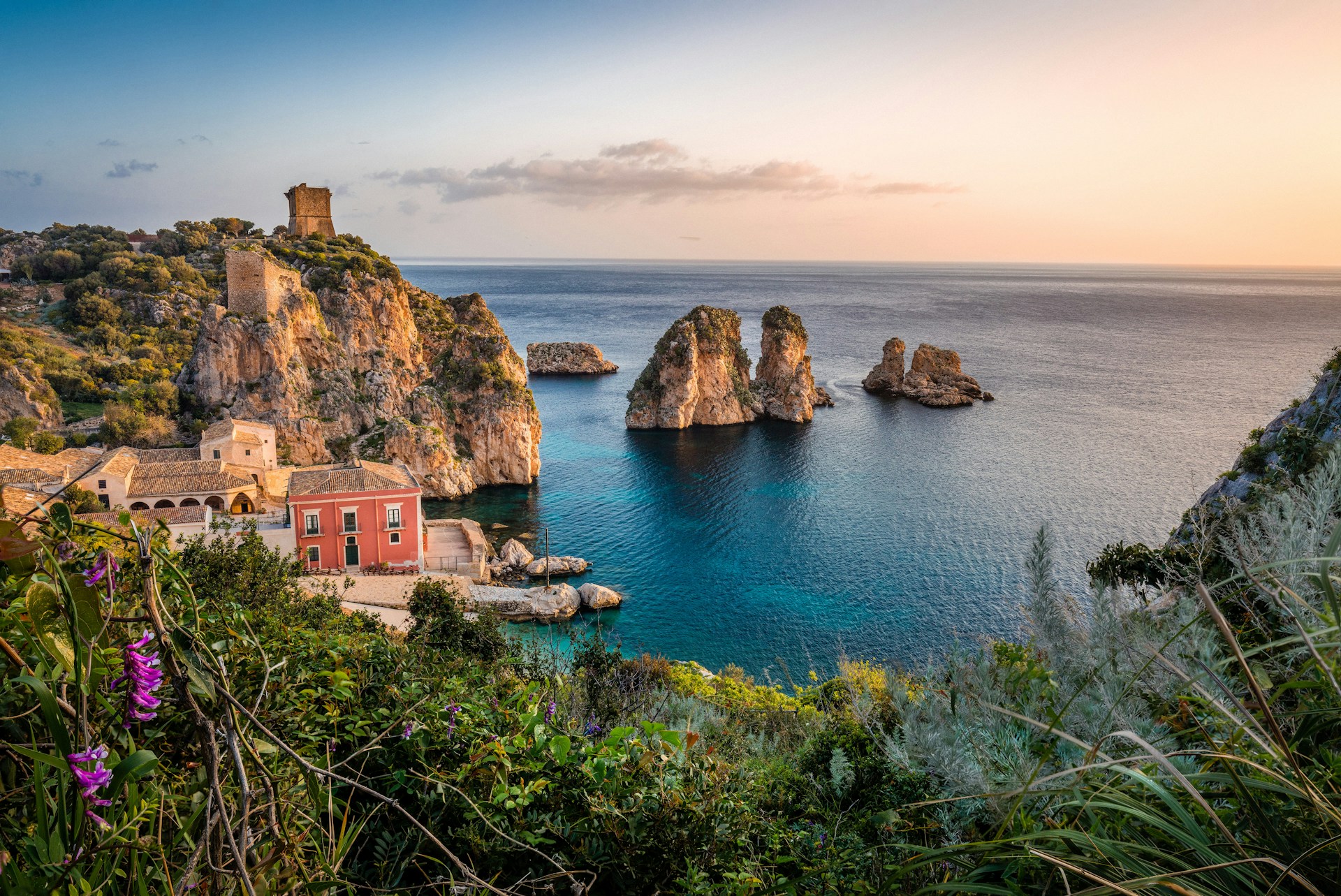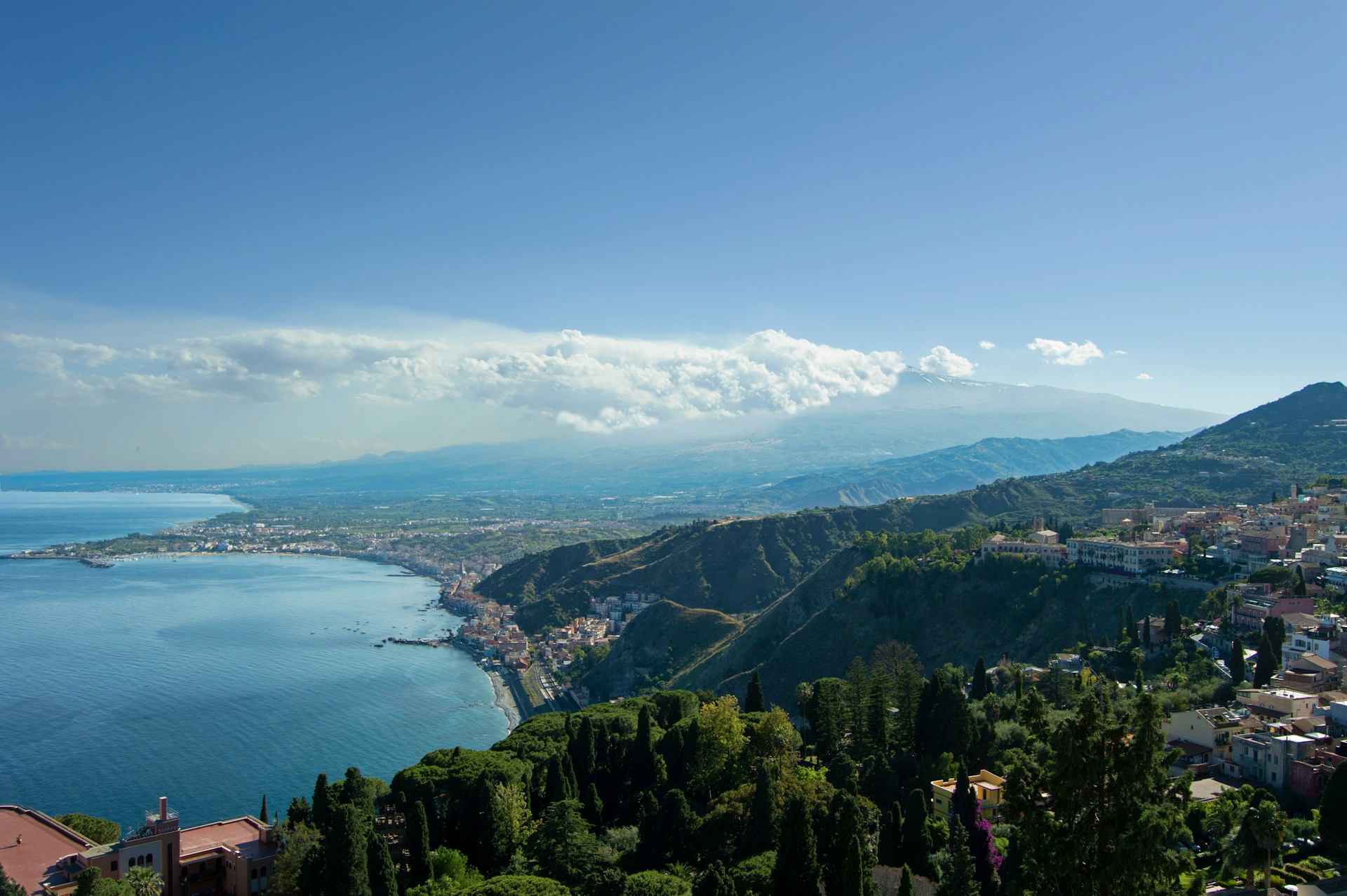Culture & Travel
3 June 2024One of Europe's most sought-after countries, Italy has never lost its popularity. With its history, enchanting atmosphere, sea, people, and culture, this country offers travelers the chance to create unforgettable memories, making it a magnet for many. The Autonomous Region of Sicily, located in the southwest of the Italian Peninsula, is the largest island in the Mediterranean and one of Italy’s 20 regions, with Palermo as its capital. Like other regions of Italy, Sicily is renowned for its natural beauty, stunning landscapes, and cuisine. Frequently featured in popular culture, this paradise island has many curious aspects, which we’ve explored in detail.

How to Get to Sicily?
Sicily, one of the most popular and tourist-heavy regions of the Mediterranean, can be reached via multiple routes. One option is to take a direct train from Rome, Venice, or Milan stations in Italy. Another method is by bus, with routes available from Rome and Naples to Palermo and Catania in Sicily. For those wishing to travel by ferry, there is also a route from Malta. If you’re already planning a trip to Malta, you might want to include Sicily in your itinerary, as you can conveniently travel from Malta to Sicily by ferry.
What to See in Sicily?
Sicily is one of the most frequented islands in the Mediterranean, attracting numerous tourists each year with its natural and cultural features. From sea, sand, and sun to cultural and historical sites, there’s an extensive list of things to see and do in Sicily. We’ve compiled a list of must-see places for those planning to travel to Sicily. Here are the essential places to discover in Sicily.
Palermo
Palermo, the capital of the island, is one of Italy's most historically and culturally rich regions. Every street and avenue in Palermo is steeped in history. With its unique architecture, preserved structures from the past, and delectable cuisine, it captivates visitors. Palermo has many places worth seeing, including the Palermo Cathedral.

Palermo Cathedral
This historic cathedral in Palermo is dedicated to the Assumption of the Virgin Mary and serves as the main church of the Roman Catholic Archdiocese of Palermo. Built by Norman King William II in 1184, this magnificent structure features a blend of Neoclassical, Baroque, Gothic, and Arab architectural styles. The cathedral complex includes the façade, sacred area, choir, crypt, royal tombs, and a museum.
Norman Palace
Used as a residence by the Norman royal family, this famous palace was built in the 12th century and is listed as a UNESCO World Heritage site. It is a prime example of Arab-Norman architecture. The palace comprises the main building, chapel, grand hall, old hall, and tower. It is open to tourist visits every day, with a small entrance fee required.
Catania
Located to the east of the region, Catania is the second-largest city after Palermo. It is one of Italy's premier summer tourism destinations. The world-famous Mount Etna is located here. Catania’s Duomo Square is one of the city’s iconic spots, featuring baroque-style buildings designed by the renowned architect Vaccarini. The Roman Theater and Ursino Castle are other must-see sites in Catania.

Sant’Agata Basilica
Situated at the foot of Mount Etna, Sant’Agata Basilica is dedicated to the Virgin Mary and the city's patron saint, Saint Agatha. The construction began in the 11th century and was completed in the 17th century. Architecturally, the basilica reflects Norman, Gothic, Baroque, and Neoclassical styles. The basilica comprises the façade, sacred area, choir, crypt, and museum. This historical site attracts many tourists and is open daily with a small entrance fee.
Messina
The third-largest city in Sicily after Catania, Messina is a well-preserved port city with numerous historic buildings. The Bell Tower and Astronomical Clock, one of the city’s landmarks, stands 60 meters tall and features colorful statues. Another must-see is the Santissima Annunziata dei Catalani church, built in the 12th century. Despite damage from wars, it was restored in the 13th century and has survived to this day.




